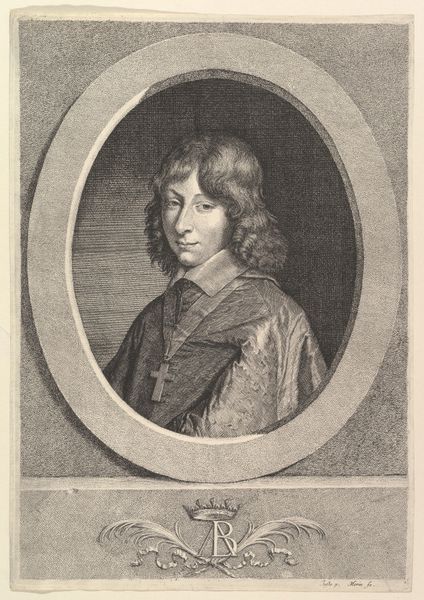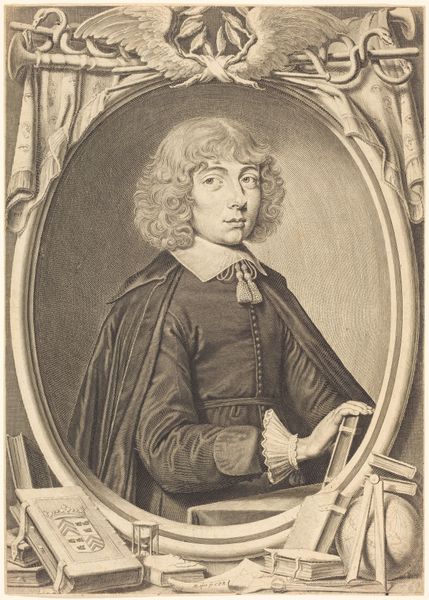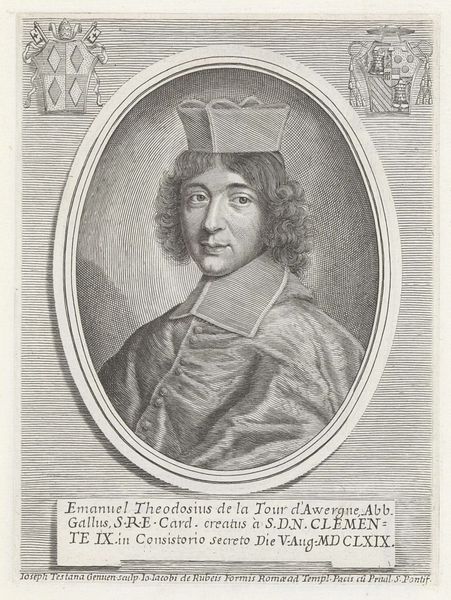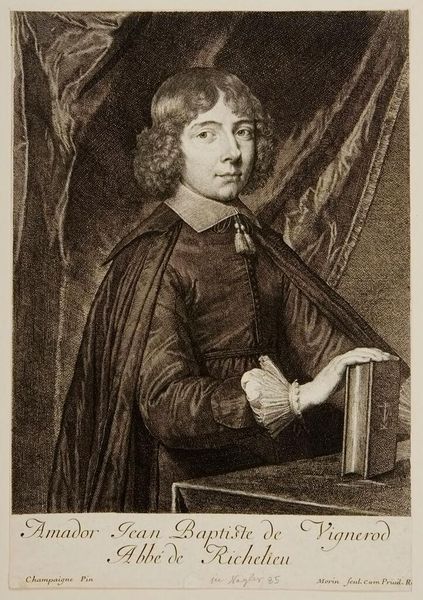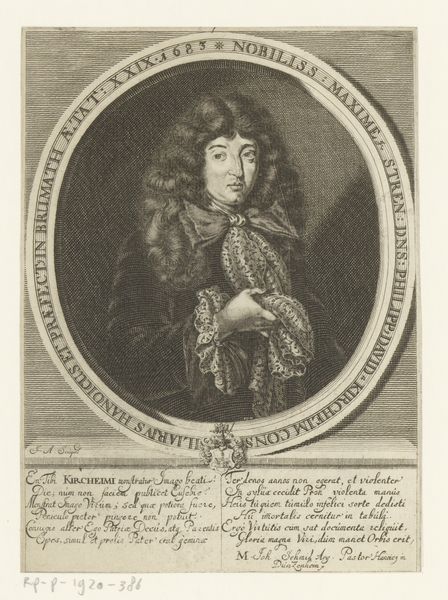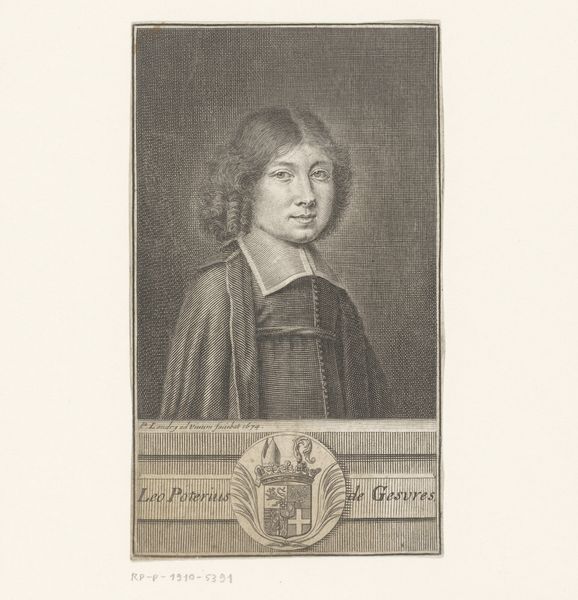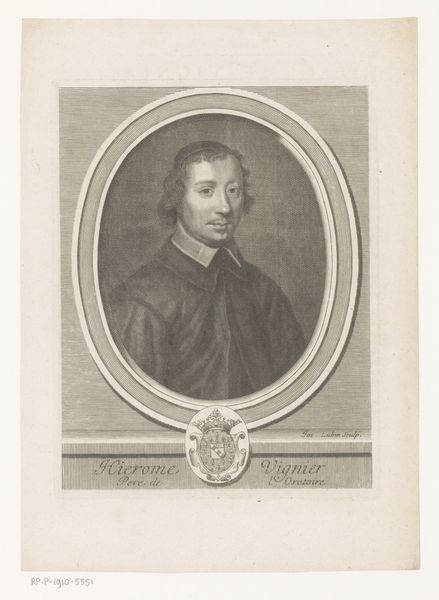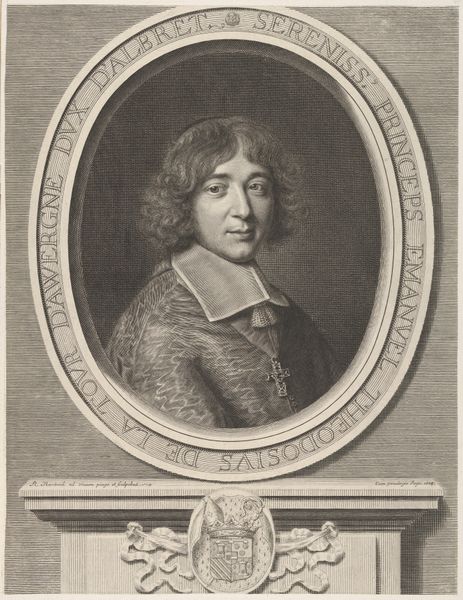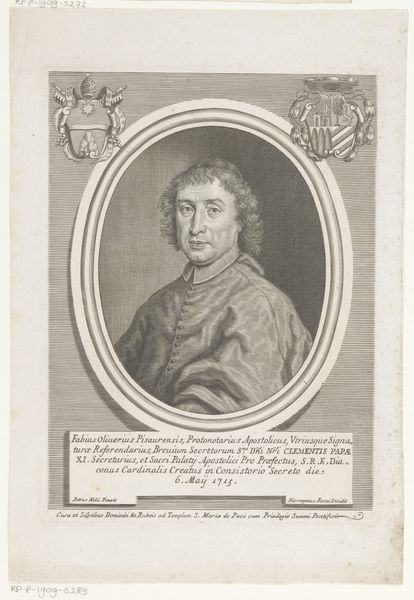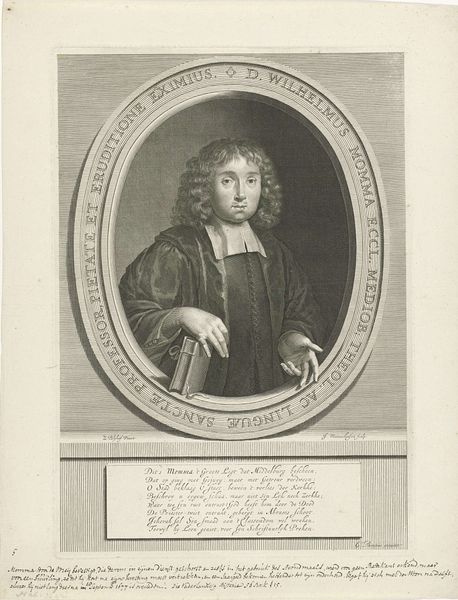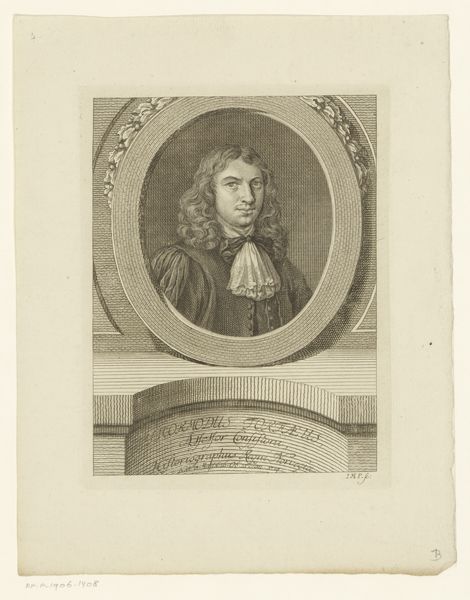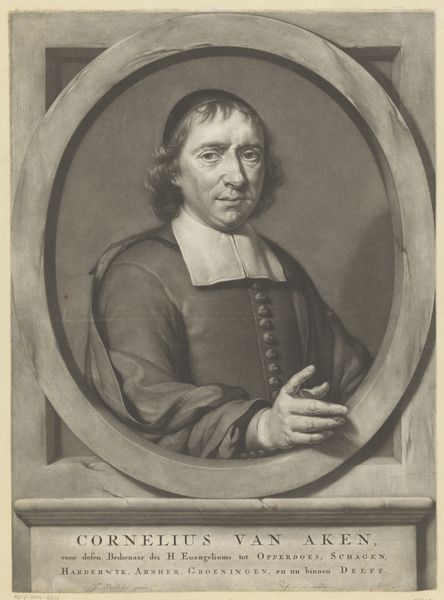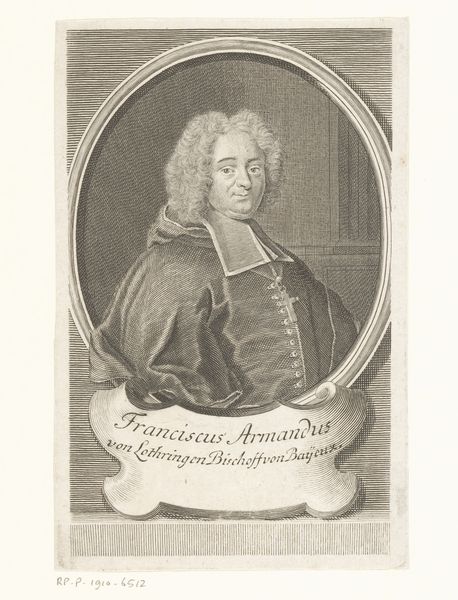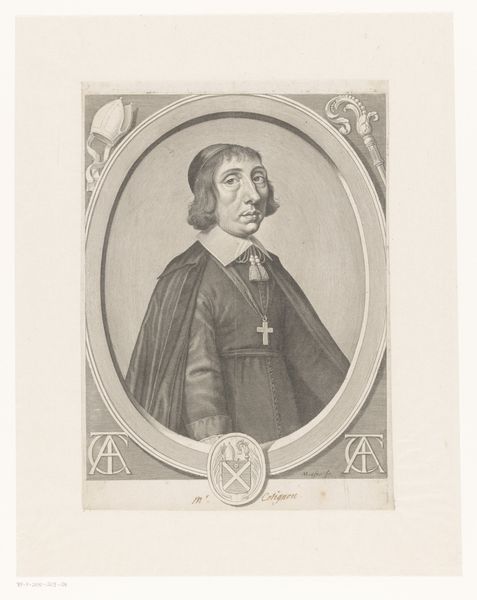
Amador Jean-Baptiste de Vignerod, abbe de Richelieu 1605 - 1650
0:00
0:00
drawing, print, engraving
#
portrait
#
drawing
#
baroque
# print
#
old engraving style
#
men
#
engraving
Dimensions: sheet: 12 3/8 x 9 1/8 in. (31.4 x 23.2 cm) image: 11 1/4 x 7 7/8 in. (28.5 x 20 cm)
Copyright: Public Domain
Curator: Before us we have a 17th-century engraving, dating roughly between 1605 and 1650. Jean Morin is credited with its creation. The subject? Amador Jean-Baptiste de Vignerod, Abbé de Richelieu. Editor: My first impression is of contained ambition. Look at how his hand firmly rests on the book, but the drapery behind him feels restless. There’s a real tension there. Curator: Precisely! Think about what the Abbé represented within the deeply hierarchical structure of the church and aristocracy at the time. The very act of commissioning such a portrait asserts his position. Editor: The book itself becomes an interesting symbol. The Abbé’s prominent display of religious text makes me think about the cultural importance of scripture during the period and, more specifically, Richelieu's ambition within the church. The cross on the cover feels incredibly deliberate. Curator: Absolutely. And let's consider the broader societal currents. The artwork belongs to the Baroque era—a period marked by heightened drama, intricate details, and intense religious fervor following the Reformation. This portrait places him firmly within that visual and ideological landscape. How is this image functioning within conversations of the period? Editor: Looking closer, I also can't help but consider ideas of self-fashioning in Baroque portraiture. Notice his careful grooming, his deliberate gaze, and expensive clothing that would have broadcasted status and solidified perceptions. Curator: These elements signal not only wealth, but also power—both tangible and symbolic. He understands the importance of crafting an enduring visual statement within a political system increasingly fascinated by image and spectacle. And for whom was this image made? For those whom the Abble sought patronage? A copy for the family holdings? All are interesting and valid points of view. Editor: It really is fascinating how much social context is embedded in one still image. These historical portraiture traditions almost provide snapshots of these individuals in ways other records can't. Curator: And they give us an insight into the power dynamics within a moment. Studying a work like this gives me the opportunity to ask a multitude of questions. Editor: Indeed. Reflecting on the symbols—the book, the clothing, the setting—invites a meditation on faith, status, and self-representation in the 17th century. Curator: Agreed, and as an intersectional lens, understanding its relationship with historical, societal, and philosophical standpoints provides important background into the Abbé’s identity.
Comments
No comments
Be the first to comment and join the conversation on the ultimate creative platform.
